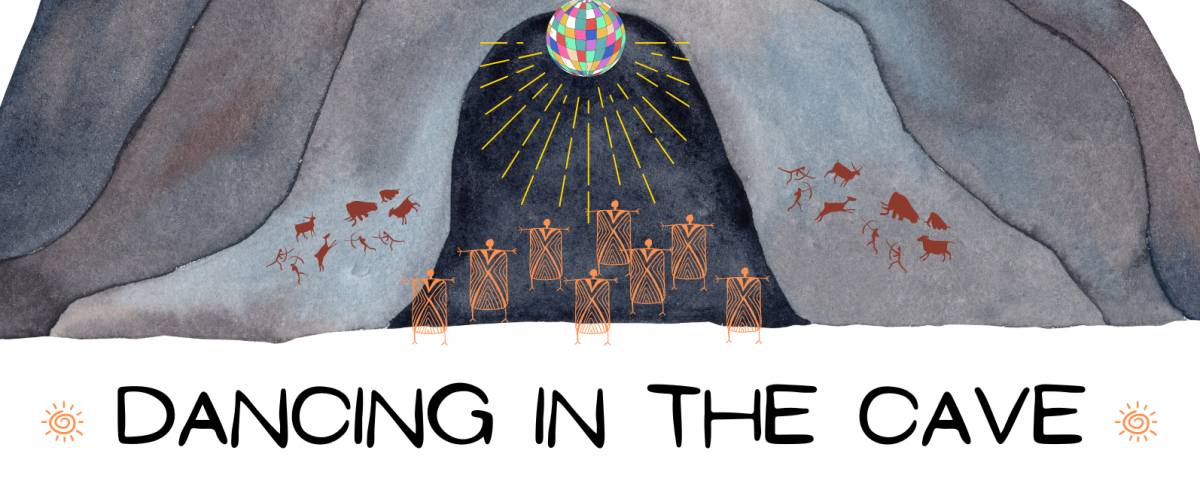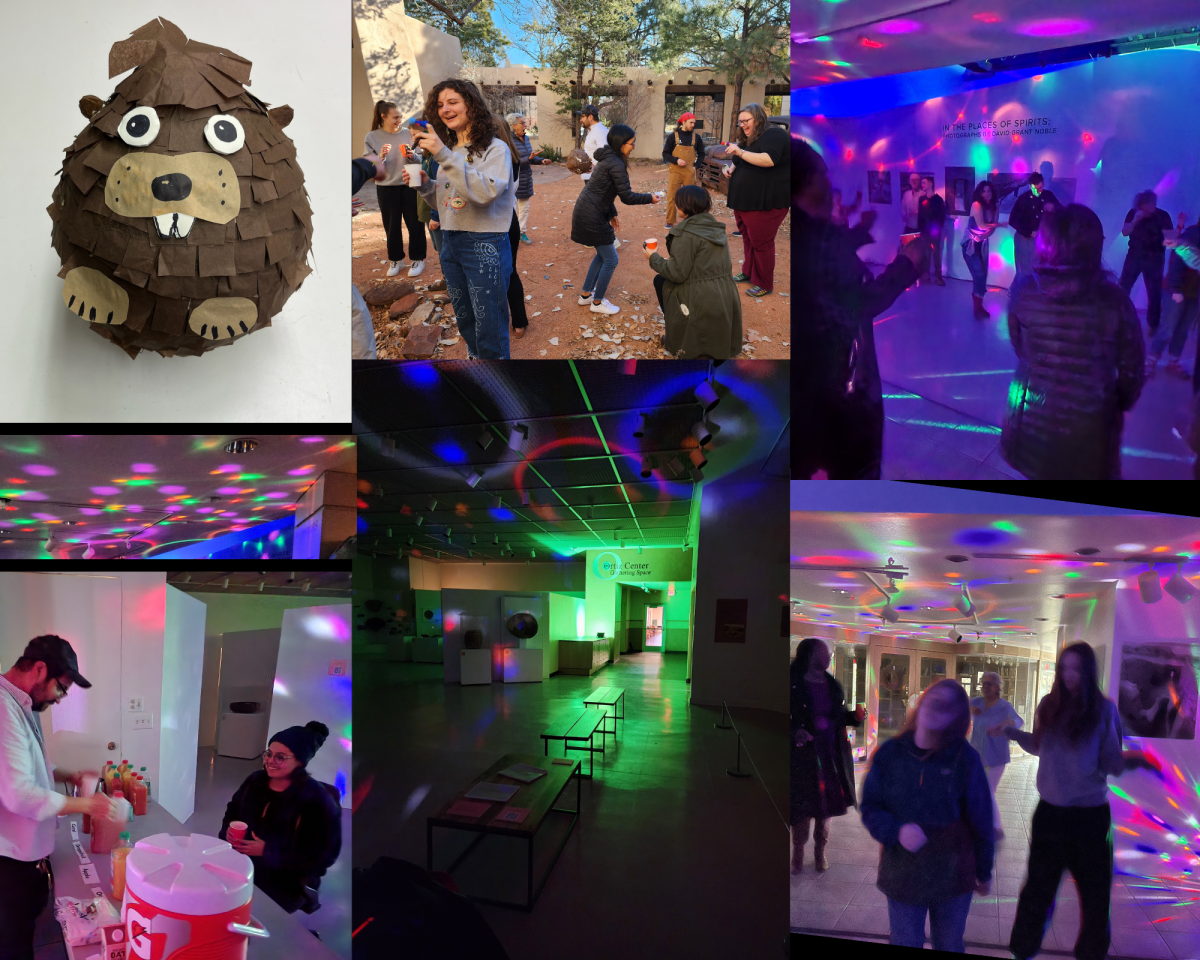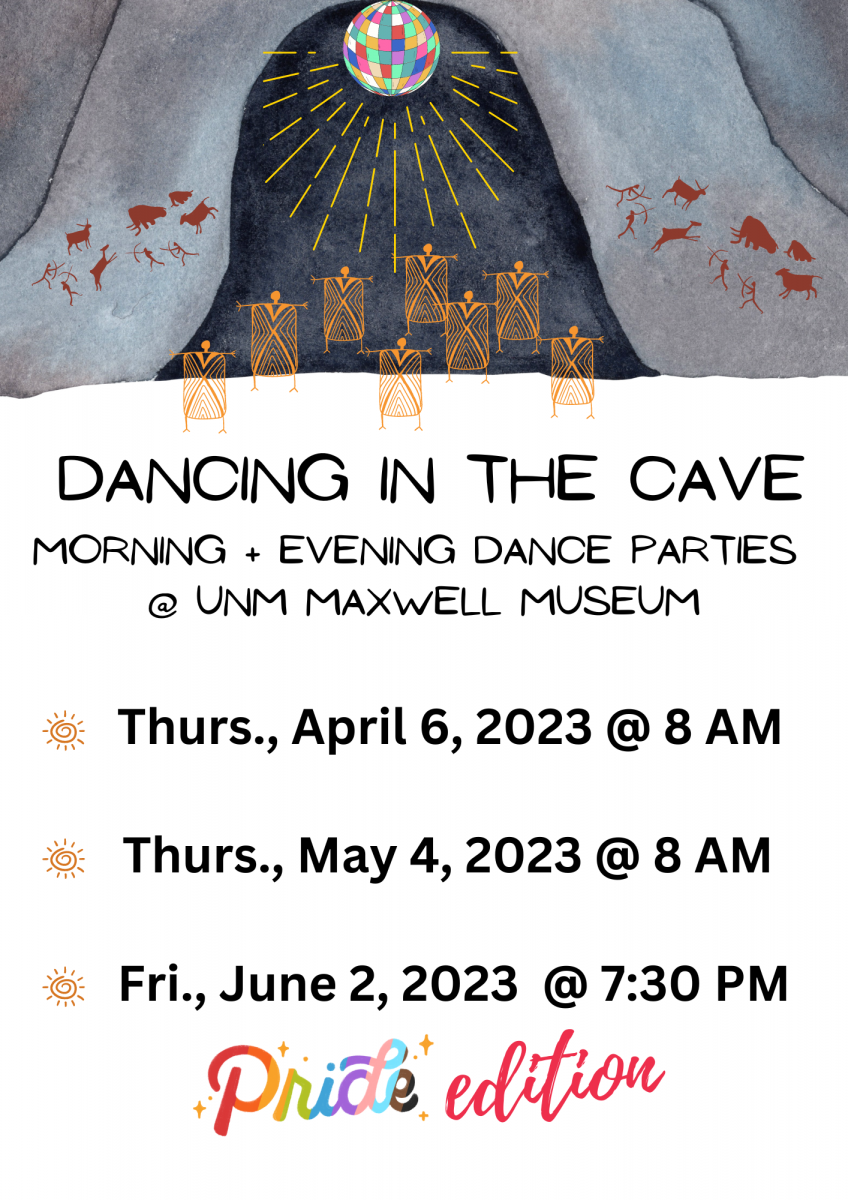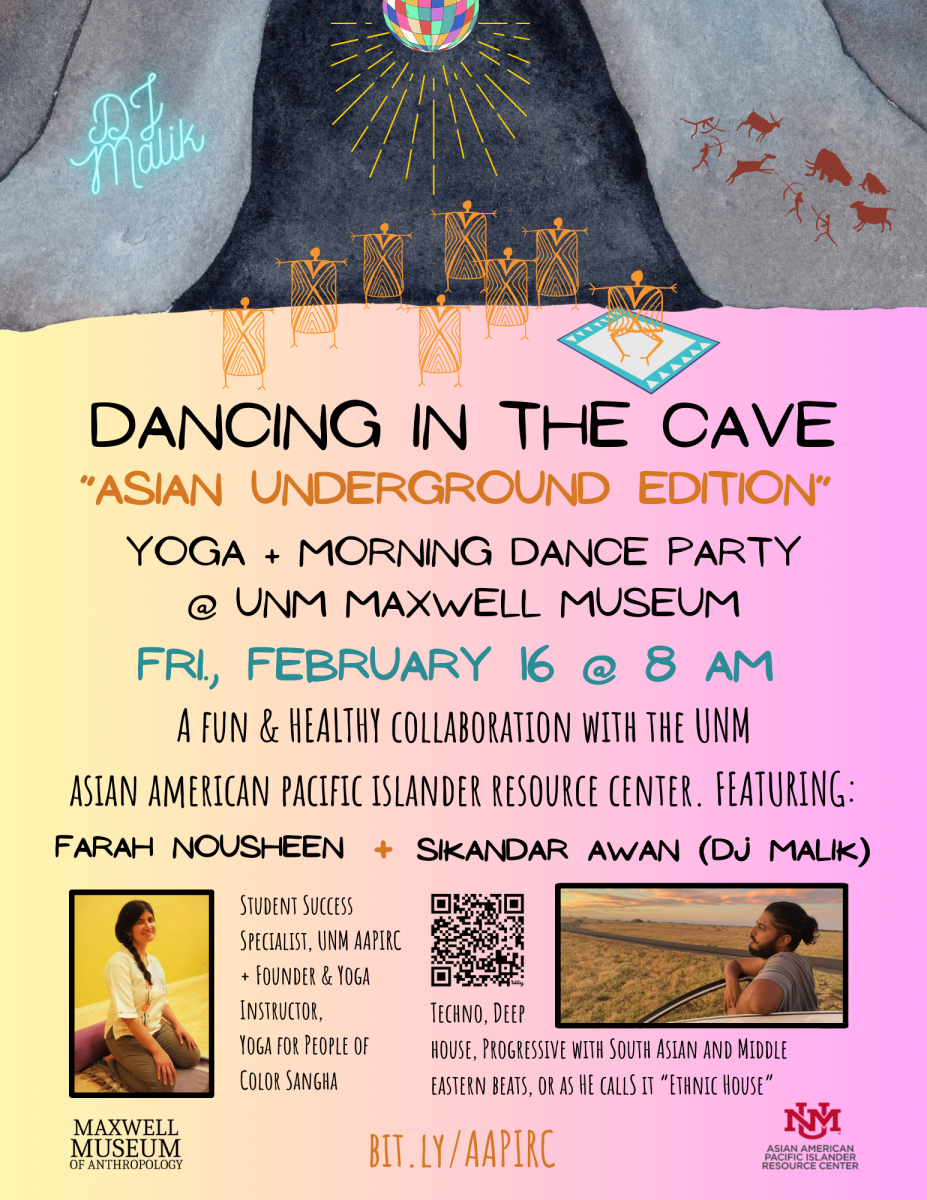Maxwell Museum Blog

Blog post written by Julián Antonio Carrillo, PhD, Curator of Public Programs
The Maxwell, with in-kind support from the UNM Art Museum, began hosting the "Dancing in the Cave" series of early morning dance parties in and around the former's Ancestors exhibit. The inaugural "cave rave," as dubbed by some participants, with disco lights and illuminated colorful walls took place on February 2, 2023, "Groundhog Day."
That day we offered a free juice bar, iced coffee, and the chance for folks to curate a collective playlist that included cumbia, electronica, pop, raggaeton, and even some Ukrainian folk music. We also crushed a groundhog piñata, hand-made by former Curator of Exhibits, Devorah Romanek, in the museum courtyard where its insides scattered mini chocolate bars on the floor for all to enjoy.
Given this initial success, the Maxwell has since offered more of these fun, healthy, social, and energetic events. Most of them have taken place in the morning, but some special editions, like the one organized with the UNM LGBTQ Resource Center in honor of Pride month 2023, took place in the evening.
Why host a dance party at an anthropology museum? The short answer is "Why wouldn't we?" But the idea of gathering in an enclosed space and creating music and dance is truly ancestral. "La idea es eternamente nueva. Cae la noche y nos seguimos juntanto a bailar en la cueva," or in its English translation: "The idea is eternally new. The night arrives and we continue to gather to dance in the cave." These lyrics, in their original Spanish, is how Grammy-award winner Jorge Drexler begins his song, "Bailar en la Cueva" (Dancing in the Cave), a clever and danceable musical tribute to humanity's long-lasting love affair with dancing and movement.
The Uruguayan singer-songwriter evokes dancing as a belief system, as a form of cultural heritage, and as a kind of game. A "game" we might have learned and developed by dancing with our own shadows projected on the walls of ancestral caves spinning around the fire. He also states that music "teaches, dreams, hurts, and heals" and correctly posits that people were making music more than 12,000 years ago, before we invented agriculture. This was, in essence, the spark that lit the fire to start our museum dance events.
But the tinder for the spark to start the fire is our museum's Ancestors permanent exhibit. The exhibit -- which will be reimagined and redone in the next years -- leads visitors through aspects of modern humanity that makes us unique as a species. It also traces the path of evolution through the past four million years. More to our point here, it includes a unique replica of the famous Cave of Niaux. Niaux is an archaeological site in France best known for its vivid cave paintings of bison, goats, and other animals; prehistoric art work that was done between 17,000 and 11,000 years ago! But as Drexler reminds us, a great deal of human activity -- past and present -- is ephemeral and intangible, art included.
Indeed, while some of our human ancestors' art was saved on cave walls, a lot of other creative endeavors like music and dance were only vibrations and rhythms -- a "language" of its own, I would argue -- that existed in a time and space and then were gone with the wind, like passing clouds. Despite this, we know from the archaeological, ethnohistorical, and ethnographical record just how central and powerful music, ritual, and dance was and is to culture, to humanity, worldwide.
Lastly, as the 2022 article "Four Ways Dancing Makes You Happier" explores, "humans are hardwired for dancing which might explain why it's so good for our health, happiness, and relationships." So, all in all, this is why we started the "cave raves" and invite you to join us at our next one.

(Scenes from the inaugural "Cave Rave" on February 2, 2023)




